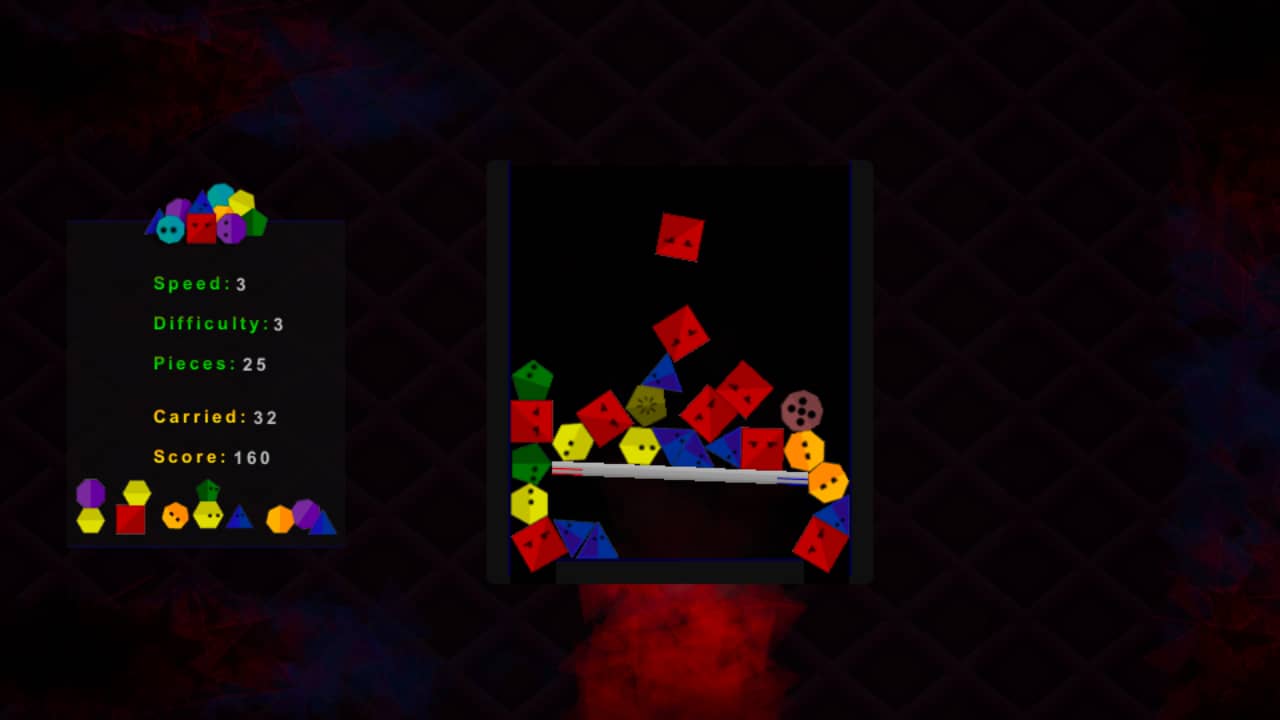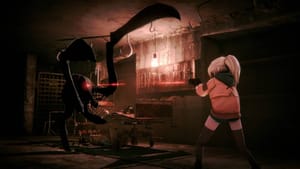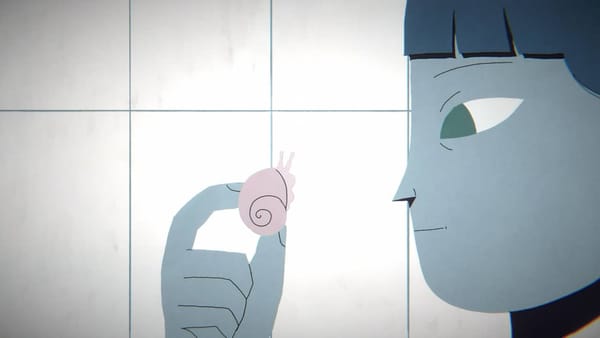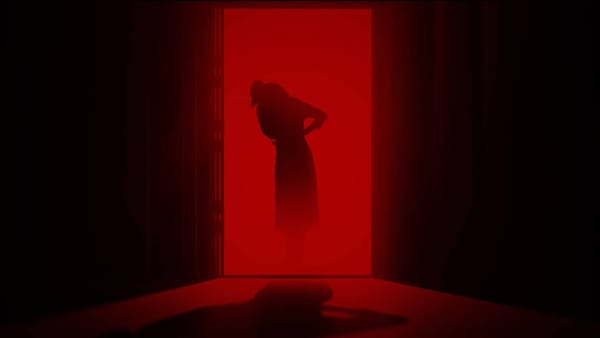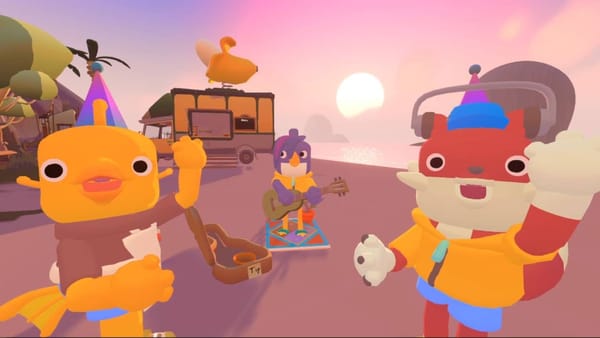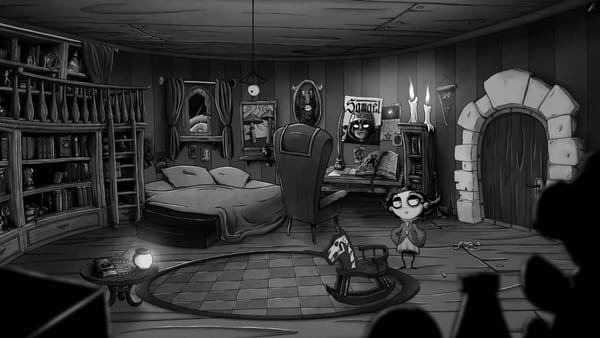Doing a write-up for Reaction is probably easier than actually playing it. That’s not because this indie physics game is particularly difficult to play, or even hard to understand. It’s the addictive element that becomes apparent after one or two games.
One has to go through a process, and they’re all relatively straightforward to do. First, you need a computer with the standard peripherals, head on over to Itch and download Mechanical Ink’s puzzler. That’s the easiest bit. After that, you need to play it, and if you’re an overthinker like me, work out if there’s anything else to it other than the immediate gameplay.
I don’t like to complicate things for the sake of it, but it’s a default response. The gameplay in Reaction is so remarkably easy, I had to wonder whether I was missing something. Nope. But, as I say (perhaps write) time and time again, simplicity often makes for a better experience, and that doesn’t mean that the game is easy. Despite the simple execution.
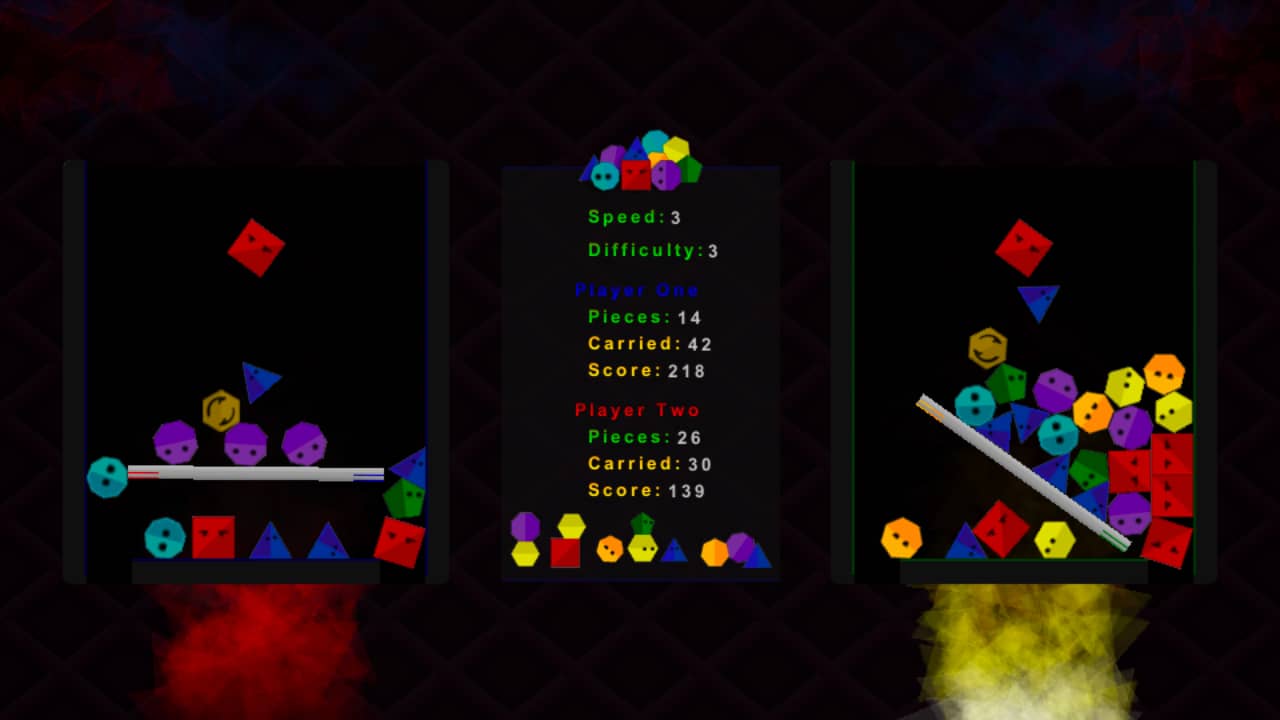
You take control of a paddle on a pivot and can do a full 360º by rotating left or right. Unfortunately for lazy people like me, you can only play on the keyboard, but only using two keys (plus Esc), it’s not going to affect your band practice in the morning or stop you from posting articles on your gaming website. A bit like Tetris, shapes will fall from the top of the screen, and you have to direct them to the left or right gutter. Should any shapes overflow and topple outside of the playing area, it’s game over.
Reaction has seven shapes, and points are awarded for all of those you knock off to the sides. The first shape is the triangle, and with three sides, you get awarded three points. The top shape is an enneagon with nine sides, giving you nine points. Maths. In addition, random power-ups will fall, and if you can touch them with your paddle – not a euphemism – they will award points or spawn other shapes. Arguably the best one is a ruby heptagon as it destroys whatever shape it touches. In my case, I’d always aim at the squares. I hate those bastards.
And that’s it. After a while, the speed will increase, as will the difficulty and to be honest, it’s relentless. After a few attempts, I was able to get on the scoreboard but compared to others, it would take some skill to climb the ranks. I tried several strategies, such as piling up squares and triangles on one side and the others on the opposite. Another would be to alternate the path of each falling block to ‘balance it out’, then another method would be to keep the paddle in a fixed position and hope for the best.
None of these were fool proof.
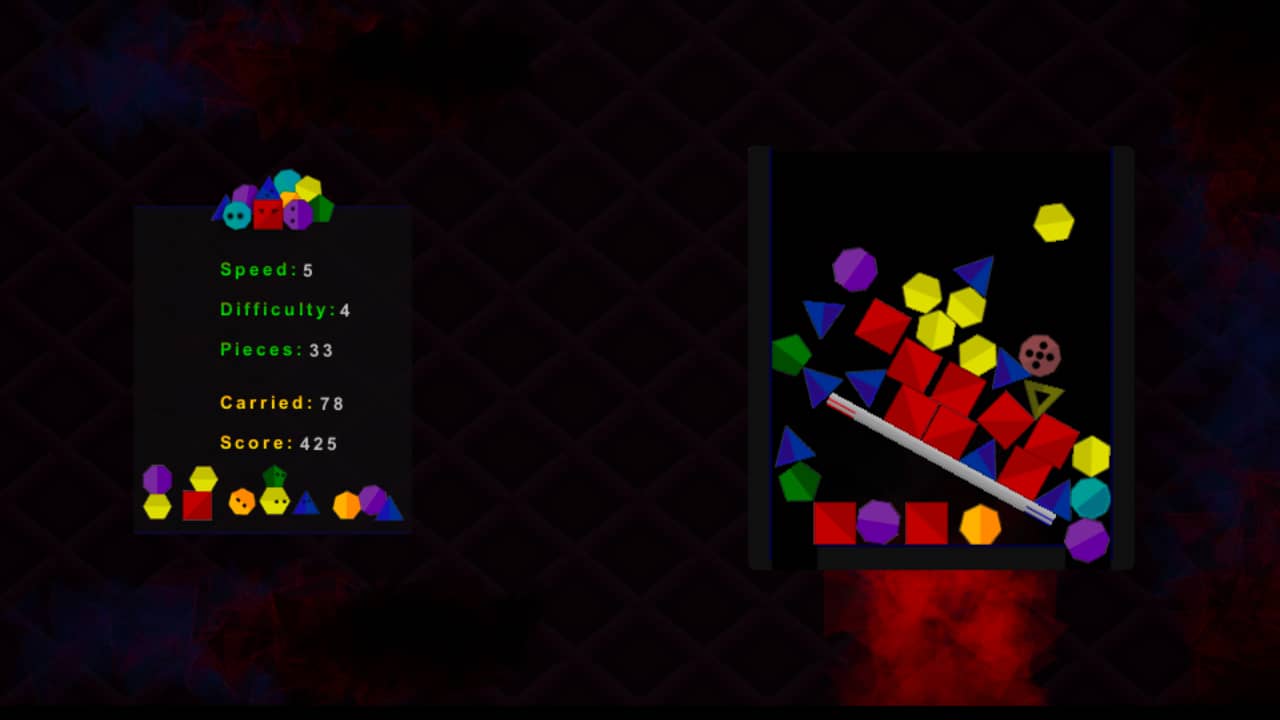
However, once I accepted that this was all there was Reaction, I played again and again. And again. But that’s a bit of a white lie on ‘all there was’. Besides the single player mode, you can play in multiplayer. That doesn’t appeal to me, and my reviews aren’t scored, so we’ll omit that. Perhaps the reason for not playing was to save face? No, not really – online gaming ain’t my bag. Still, the customisation options are a nice touch as you can increase the speed and difficulty. You can try to cheese it and set everything to easy, but like my experience with Beat Invaders, the harder the challenge, the more fun it became.
So what’s the verdict? I think it’s pretty good fun. I must admit, I ended up muting the music as it got to me after so many plays, but that’s a subjective element. Mechanical Ink did reach out to me – it’s not like I have a nose for indie games. That said, a code wasn’t provided as it’s on Itch. With that confirmed, it gets a thumbs up from me, considering the addictiveness and simplicity. If you’re all about supporting indie devs, and not just for the sake of it but because you enjoy indie games, you know what to do.


